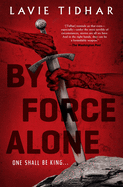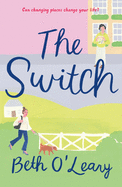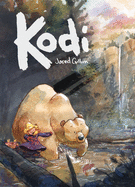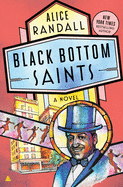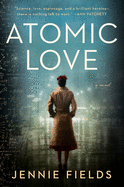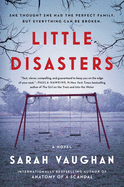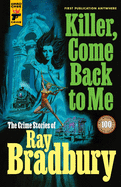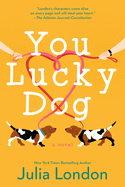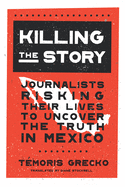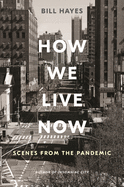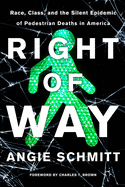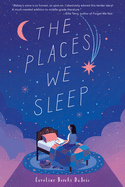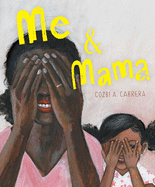Friday, August 28, 2020
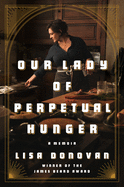 In reflecting on my reading of late, I discovered an unintentional theme: stories of women shirking societal expectations in order to pursue their own passions and desires. Glennon Doyle's Untamed (Dial, $28) has been widely praised for delivering this exact message, and with good reason: it's an excellent and inspiring tale of one woman's journey to finding her own path. Our Lady of Perpetual Hunger (Penguin, $28) is ostensibly a food memoir, but in truth, Lisa Donovan's story is more about finding joy and purpose in her work--and her life--by walking away from all that did not serve her or her values. Tiffany Dufu's Drop the Ball (Flatiron, $17.99) promises advice on "achieving more by doing less." Dufu's method draws on this same principle, though: it is only by letting go of patriarchal expectations of womanhood and focusing on one's own personal values that women will find the time to pursue their passions.
In reflecting on my reading of late, I discovered an unintentional theme: stories of women shirking societal expectations in order to pursue their own passions and desires. Glennon Doyle's Untamed (Dial, $28) has been widely praised for delivering this exact message, and with good reason: it's an excellent and inspiring tale of one woman's journey to finding her own path. Our Lady of Perpetual Hunger (Penguin, $28) is ostensibly a food memoir, but in truth, Lisa Donovan's story is more about finding joy and purpose in her work--and her life--by walking away from all that did not serve her or her values. Tiffany Dufu's Drop the Ball (Flatiron, $17.99) promises advice on "achieving more by doing less." Dufu's method draws on this same principle, though: it is only by letting go of patriarchal expectations of womanhood and focusing on one's own personal values that women will find the time to pursue their passions.
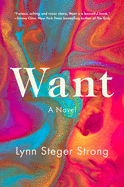 As for fiction, Quan Barry's We Ride Upon Sticks (Pantheon, $26.95) follows this same theme. A group of high school field hockey players call on dark magic to help them advance to the state finals in Barry's clever and poetic novel--but the magic they conjure looks less supernatural and more like teens being given permission to do what they want. Lynn Steger Strong's aptly titled Want (Holt, $25.99) details one woman's struggle to understand what she wants, versus what she's been told to want.
As for fiction, Quan Barry's We Ride Upon Sticks (Pantheon, $26.95) follows this same theme. A group of high school field hockey players call on dark magic to help them advance to the state finals in Barry's clever and poetic novel--but the magic they conjure looks less supernatural and more like teens being given permission to do what they want. Lynn Steger Strong's aptly titled Want (Holt, $25.99) details one woman's struggle to understand what she wants, versus what she's been told to want.
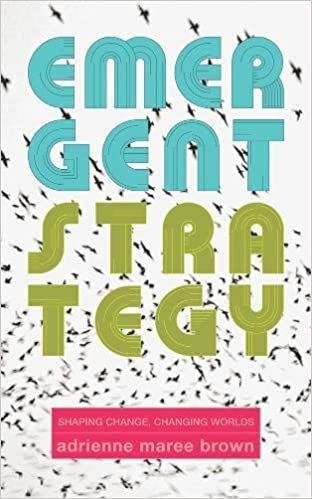 In Emergent Strategy (AK Press, $16), social justice facilitator adrienne maree brown reminds us that "what we pay attention to grows." I now find myself paying even closer attention to the stories of women seeking their own passion and pleasure to effect great change, not only in their own lives, but in the world at large.
In Emergent Strategy (AK Press, $16), social justice facilitator adrienne maree brown reminds us that "what we pay attention to grows." I now find myself paying even closer attention to the stories of women seeking their own passion and pleasure to effect great change, not only in their own lives, but in the world at large.
Black Bottom Saints
by Alice Randall
A novel, a summoning of the spirits, an invigorating memorial and a book-length jubilee, Alice Randall's Black Bottom Saints blends a raucous fictionalized autobiography of Detroit's real-life Joseph "Ziggy" Johnson with reminiscences of 52 "saints" from his hometown's Black Bottom neighborhood. Ziggy was a storied Black emcee, educator and raconteur who died in 1968, and here he celebrates the life and culture of one of 20th-century America's most prosperous Black communities. Randall (and Ziggy) take inspiration from Catholic Saints Day Books, calendar tracts that pair each week of the year with a saint. Here, those saints are friends and sources of inspiration to Ziggy and Black Bottom. Some are internationally celebrated, like Ethel Waters and Dinah Washington. Some are too-little known, like the frustrated playwright Elsie Roxborough, who left Detroit for New York and changed her name to pass as white before her tragic early death. And some are everyday folks, like Billy D. Parker, one of Black Bottom's "breadwinners," whose work in Detroit's auto industry funded community, culture and vacations in Idlewild.
Ziggy's devotionals are touched with grace but far from sober--each of his inspiring evocations of 20th-century Black life ends with a recipe for a cocktail named for that particular saint. Randall (The Wind Done Gone) also threads through her sprawling novel an account of Ziggy's last days, in Detroit's Kirwood Hospital, and glimpses of Ziggy's impact on generations of young people, notably the tennis star Althea Gibson. The novel's considerable power lies in Randall's vivid conjuring of 20th-century Black lives, Black genius and unforgettable dish. This joyous novel is an act of collective memory. --Alan Scherstuhl, freelance writer and editor
Discover: This novel thrillingly conjures 52 Black lives of the 20th century.
Atomic Love
by Jennie Fields
During World War II, Rosalind Porter enjoyed professional success as a scientist, working on nuclear projects alongside a team of equally brilliant men. But since 1945, she has been haunted by two things: abrupt abandonment by her British lover Thomas Weaver, a fellow scientist, and the destruction caused by the atomic bomb they both helped build. In her fifth novel, Atomic Love, Jennie Fields picks up Rosalind's story in 1950, when Weaver resurfaces, pleading with her to see him. As Weaver begins courting her, so does the FBI: they believe he might be selling nuclear secrets to the Russians. Rosalind must walk a fine line as she wrestles with how to help her country and protect her own heart.
Fields (The Age of Desire) sets her story in postwar Chicago, where Rosalind--driven out of the lab by a damning report, written by Weaver--is selling jewelry at a department store. Charlie Szydlo, the FBI agent assigned to Rosalind's case, is facing struggles of his own, including nightmares of his time as a POW in the Philippines and Japan. As Charlie and Rosalind work together to uncover Weaver's secrets, the attraction between them complicates matters, yet gives them hope for a second chance at happiness. Fields sensitively depicts the layered dynamic between Charlie and Rosalind, as well as Rosalind's fraught relationship with her sister (who is facing marriage difficulties) and Charlie's battle to leave his war experience behind. Atomic Love is a twisty, compelling story of science, passion and conflicting loyalties. --Katie Noah Gibson, blogger at Cakes, Tea and Dreams
Discover: Jennie Fields tells a compelling story of nuclear science, love and conflicting loyalties in her fifth novel.
Mystery & Thriller
Little Disasters
by Sarah Vaughan
Another pulse-pounding thriller from the author of the Anatomy of a Scandal, Little Disasters is a dark look at the violence of motherhood. Liz is a London pediatrician and parent, caring for her bedridden mother. Jess is an overworked mother of three, including an infant, whose marriage is on the fritz. When Jess brings her baby into the ER where her friend Liz is on duty, Liz is shocked to find the child has a skull fracture, and even more shocked when Jess's story doesn't line up with the evidence. As the police dig deeper, Liz questions if she ever really knew her friend and if the strains of motherhood always overcome even the best of women.
Little Disasters is exemplary for its cleverly constructed plot, with all the slow-burn tension and compelling twists of a signature Sarah Vaughan novel. Without falling back on a too-large cast of suspects, Vaughan still crafts an unpredictable resolution by skillfully developing her lead characters. From the first page, Liz's narration is so inviting, so casually normal, that readers can't resist going along for the ride, even as the revelations get darker and hit closer to home. The strength of these characters, the genuine urgency of their emotions and the nuances of their relationships take center stage. In this way, Vaughan carves out space even in a fast-paced page-turner to tackle haunting concerns about society's tendency to place blame on mothers. --Alice Martin, freelance writer and editor
Discover: Perfect for fans of Liane Moriarty and Celeste Ng, Little Disasters is an expertly crafted, uncanny thriller that offers mesmerizing characters, topical themes and unrelenting revelations.
Killer, Come Back to Me: The Crime Stories of Ray Bradbury
by Ray Bradbury
Hard Case Crime celebrates the centennial anniversary of Ray Bradbury's birth with Killer, Come Back to Me, an outstanding collection of 20 of his best mystery and crime stories. Although Bradbury is remembered for his prolific science fiction and fantasy writings, he periodically branched out into other genres. The majority of these stories were published in the 1940s and '50s in magazines like Dime Mystery, Weird Tales and Detective Tales. "The good stories you write later are an umbrella over the bad stuff you discover you left behind you in the years," Bradbury writes modestly. But there is no bad stuff in this collection--each story offers vintage delights.
Fans will covet "Where Everything Ends," which is the source text for his 1985 detective novel Death Is a Lonely Business. Another rarity is "Hammett? Chandler? Not to Worry," a warm tribute to his friend and mentor Leigh Brackett. Many stories have a supernatural element to them. In the time-travel tale "A Touch of Petulance," a happy honeymooner meets a future version of himself who warns he will murder his wife. "The Screaming Woman" is a terrific nail-biter about a little girl who can't convince people she hears a woman buried beneath the earth. "The Small Assassin" features a murderous baby; Bradbury believed it "to be one of the best stories in any field that I have written."
Killer, Come Back to Me will expand Bradbury's fan base with this sensational introduction to his vintage mystery and crime tales, which still sparkle and entertain. --Kevin Howell, independent reviewer and marketing consultant
Discover: Killer, Come Back to Me is a captivating collection of Ray Bradbury's mystery and crime short stories and is a sure bet to gain new fans among mystery lovers.
Science Fiction & Fantasy
By Force Alone
by Lavie Tidhar
Israeli-born, London-dwelling World Fantasy Award winner Lavie Tidhar (Osama; The Violent Century) proves the Matter of Britain still matters with this stylishly gritty, gripping reimagining of Arthurian legend.
Whereas T.H. White's Arthur dreamed of tempering might with right, Tidhar's post-Roman Londinium births a species of monarch closer to crime lords for whom "to be a king is to be judge and executioner both, and rule by force alone." In this violent, unsanitized world, Arthur and his "boys," including his foster brother, Kay, make their mark by stealing and selling a shipment of hallucinatory fungus known as Goblin Fruit. Merlin, a fae parasite who feeds on power, assists Arthur's rise with magic and manufactured prophecies. Future queen and expert thief Guinevere leads a crew of deadly, hedonistic women called the Choir of Angels, and Judean knight Lancelot uses his martial arts expertise to help his mad master search for the Grail, an alien weapon that fell from the sky and landed in Britannia. Somehow the band of thugs builds their Camelot, but in a land where fortune answers to force alone, no peace can last.
Tarantino meets Monty Python in this wry, blood-soaked tour of legends that thumbs its nose at purism. Scripted by eldritch puppet masters, Arthur's reign has little glory and often props itself up with the same nationalism and xenophobia his legend has been used to invoke in real life. A mythology for a new generation, Tidhar's irreverent revisioning replaces dramatic heroism with acerbity and absurdity. --Jaclyn Fulwood, blogger at Infinite Reads
Discover: In this cynic's retelling of Arthurian legend, traditional heroes are recast as parasitic magicians, petty thugs and skilled assassins to pointed and often humorous effect.
Romance
The Switch
by Beth O'Leary
Perfect for fans of Jojo Moyes, The Switch is a nuanced, heartfelt look at two strong women and the importance of being brave enough to change the status quo. Leena, a hotshot young London executive, has been struggling at work, and is told she must take a two-month sabbatical. Her grandmother Eileen, a feisty Yorkshire pensioner, has been lonely since her husband walked out, and her tiny village doesn't offer much in the way of septuagenarian dating options. So, Eileen and Leena decide to swap lives in The Switch, the second novel by Beth O'Leary (The Flatshare).
In Yorkshire, Leena must come to terms with memories she's suppressed, and is forced by proximity to talk to her mother, whom she's been avoiding. Slowly she begins to find a new freedom in letting go of the past, and she starts to realize that she loves how village life requires her to stay engaged with the people around her.
Meanwhile, Eileen is having the time of her life in London, hanging out with Leena's flatmates and dating online. She starts seeing a handsome actor, and is having the best sex she's had in decades. But there are some things about her village life that she finds herself wistfully missing.
Poignant and hilarious, The Switch does a wonderful job exploring both twilight love and youthful indiscretion. Eileen and Leena make startling discoveries about themselves and each other, and the way their relationship changes and grows is truly beautiful. A perfectly uplifting summer read, The Switch is not to be missed. --Jessica Howard, bookseller at Bookmans, Tucson, Ariz.
Discover: In this sweet and heartfelt novel, a young London executive and her Yorkshire grandmother change lives for two months.
You Lucky Dog
by Julia London
Julia London (Charmer in Chaps) has written more than 30 romance novels in various subgenres. In You Lucky Dog, she tackles her very first romantic comedy and packs it with fun, over-the-top complications. The story begins when a professional dog walker in Austin, Tex.--who is also a covert pot-dealer while on the job--mistakenly sells to an undercover cop. When he gets busted, the dog walker enlists a friend to return each dog to their rightful digs--accidentally mixing up two lovable basset hounds who couldn't be more different in personality and temperament.
Hazel--a friendly, skinny female who likes macaroni and cheese and basks on furniture--belongs to Dr. Tobias Maxwell Sheffington III. Max, in his early 30s, is a bookish professor of neuroscience, working toward tenure at the University of Texas. He's devoted to his widowed father, who cares for his brother, a talented visual artist plagued with limitations from Autism Spectrum Disorder. The other hound, Baxter, an overweight male, belongs to driven 20-something Carly Kennedy, who reluctantly inherits the rescued dog from her sister. Carly--exasperated by her divorced parents and struggling to launch her own PR firm after a layoff--toes a strict disciplinary line with the skittish, sullen Baxter. Setting right the mixed-up hounds brings Max and Carly together in a crafty, opposites-attract love story.
London's first novel in the projected Lucky Dog series is comedic and fast paced. It is filled with an offbeat cast, zany coincidences and romantic moments and mishaps that will leave readers giggling in amusement. --Kathleen Gerard, blogger at Reading Between the Lines
Discover: A fun love story where the mistaken identities of two very different basset hounds unite their even more different owners.
Biography & Memoir
Killing the Story: Journalists Risking Their Lives to Uncover the Truth in Mexico
by Témoris Grecko, transl. by Diane Stockwell
Killing the Story: Journalists Risking Their Lives to Uncover the Truth in Mexico, translated from the Spanish, is an intense personal account of the dangers faced by reporters working in a nation riddled by corruption. When award-winning journalist Témoris Grecko returned to his home country of Mexico after years spent reporting in war-torn nations, he found himself "back in a conflict zone" where as many as 141 journalists were assassinated between 2000 and 2018. Killing the Story is a stirring testament to those who lost their lives in pursuit of the truth as well as a "book of resistance" mercilessly criticizing the failures and short-sighted greed of the powers that be.
Killing the Story unfolds in chapters that are for the most part dedicated to specific persecuted or assassinated journalists, explaining how the work they did earned them the wrong kind of attention. Grecko dispels the notion that the killings are mainly the work of the much-mythologized drug cartels, even critiquing the concept of cartels as an oversimplification. Instead, persecution is often state-sponsored, with governors like Javier Duarte determined to silence dissent in "their fiefdoms." Grecko also makes clear that the crisis of journalism in Mexico is structural, with many outlets resigned to echoing government talking points in exchange for lucrative public advertising contracts. Killing the Story's heroes are those reporters who put themselves in danger for low pay, sometimes receiving abuse from corrupt fellow journalists for their troubles. Grecko pays tribute to them for their sacrifices, keenly defending the importance of their uphill battle. --Hank Stephenson, manuscript reader, the Sun magazine
Discover: Killing the Story is an ardent and personal tribute to the reporters who have sacrificed and lost their lives fighting to uncover the truth in corruption-riddled Mexico.
How We Live Now: Scenes from the Pandemic
by Bill Hayes
Since early in the year 2020, experts and pundits have been desperate to make sense of the grand and sweeping ways in which the Covid-19 pandemic is rapidly shifting the world. What acclaimed New York City author and photographer Bill Hayes brings to the conversation with How We Live Now: Scenes from the Pandemic, however, is the same ground-level, impressionistic sensibility that made his memoir Insomniac City the tender and moving portrait it is, of living, loving and grieving.
"It's strange," he writes, "to try to retrace one's steps, thinking about where you were at what point in this pandemic while still in the midst of this pandemic--and whether or not you'd ever been or put yourself at risk." Living in isolation, limiting non-essential excursions outside the home, the days blur into weeks with little to distinguish them. Yet, somehow, Hayes pulls salient moments from the ether and infuses them with a resilience that might seem precious were it not bolstered by his clear-eyed perspective, having mourned two long-term partnerships and worked in AIDS awareness and prevention. His hope rises from the quotidian, which persists in his exchanges with people he photographs on sidewalks and in parks, in conversations with taxi drivers and store clerks, in the chants of Black Lives Matter marching through the city and in navigating new love once again.
Threading essays together with journal entries and fine-art photography, How We Live Now is a wise and understanding companion for the lonely nights of catastrophe. --Dave Wheeler, associate editor, Shelf Awareness
Discover: With street-level observations about a global pandemic, this impressionistic portrait of New York City offers clear-eyed comfort amidst so many unknowns.
Social Science
Right of Way: Race, Class, and the Silent Epidemic of Pedestrian Deaths in America
by Angie Schmitt
Pedestrians are dying in the U.S. at a truly alarming rate--especially senior citizens, disabled people and people of color. Journalist and former Streetsblog editor Angie Schmitt believes this epidemic is preventable, and she's got the data to prove it. In her first nonfiction book, Right of Way, Schmitt delves into the causes of pedestrian deaths: car-centric urban planning, aggressive vehicle design and--most deadly of all--systemic inequality. In a thoughtful, accessible style, Schmitt examines the factors contributing to rising pedestrian deaths and offers practical solutions to help make America's streets safer and more walkable.
Schmitt begins by examining "the criminalization of walking": the notion that walkers, especially "jaywalkers" crossing at unmarked intersections, must be doing something wrong. She cites reams of data showing that police unfairly target pedestrians, especially young men of color, and highlights the lack of safe, accessible pedestrian crossings in many U.S. cities. She also recounts the reshaping of American cities to favor cars over other modes of transportation, shunting pedestrians to the side of the road. Schmitt balances her industry-wide statistics with individual stories of people killed while walking, such as an older man going out for cigarettes and a homeless woman in Austin. It doesn't have to be this way: data from European countries and even a few U.S. cities shows it's possible to lower the rate of pedestrian deaths dramatically. Schmitt shares success stories from cities that have made pedestrian safety a major goal, and urges other leaders to do the same. --Katie Noah Gibson, blogger at Cakes, Tea and Dreams
Discover: Journalist Angie Schmitt offers an incisive, accessible look at pedestrian deaths in the U.S. and ways to reduce them.
Children's & Young Adult
Kodi
by Jared Cullum
True friendship knows no bounds in Jared Cullum's Kodi, the first in an enchanting new graphic novel series.
Katya is spending the summer at a cottage with her grandmother, Meema. Meema would love for Katya to play with the other kids, but Katya much prefers her comic books. Besides, the other kids bully her: "They call me a monster and flick my ears." To Katya's chagrin, Meema forces her to play outside. When she's caught in a rainstorm in the woods, Katya trips into a small ravine and encounters a large bear trapped by a fallen log. As Katya and Meema nurse the bear back to health, Katya dubs him Kodi and the pair form a surprising and loving bond. When Katya and Meema must return home to Seattle, it seems she and Kodi will have to part ways. But Kodi proves to be smarter and more determined than Katya thinks and sets off on an expedition of his own to find his friend.
In his first solo work, Jared Cullum tells much of Kodi wordlessly, allowing his beautiful watercolor-like illustrations to do most of the storytelling. The sparse use of prose is an excellent choice, letting readers explore the story visually and immerse themselves in Katya and Kodi's world. This technique also makes the book feel quiet yet filled with a resounding warmth and steadiness. Katya, a relatable young heroine, is unsure of herself and her place in the world; Kodi, though silent, is warm and full of life and personality. The spirit of adventure carries Kodi and Katya through every obstacle in their endearing quest. --Kyla Paterno, freelance reviewer
Discover: A young girl befriends a bear in this enchanting middle-grade graphic novel.
The Places We Sleep
by Caroline Brooks DuBois
Caroline Brooks DuBois's reserved yet razor-sharp debut features a girl whose changing body shocks and confuses her, while her country reels from tragedy.
On September 11, 2001, preteen Abbey gets her period for the first time. "It arrives like a spotlight,/ like an intruder in my bedroom,/ like a meteor to my center of gravity./ It arrives./ And my body--/ in cahoots--allows it." Betrayed and worried about bleeding onto her white pants, she barely notices that the teachers are whispering ("Something's happening--in New York and in D.C.") and the bus driver is crying. "Crying!" Abbey thinks, "about what's happening in New York?" Her Aunt Rose lives in New York but, in her opinion, "if anyone has cause to cry, it's me." When Abbey arrives home, though, her mother doesn't even notice that her daughter is different. Abbey finds her mother packing: Aunt Rose is missing, and Abbey's mom is driving from Tennessee to New York, leaving Abbey alone with her army father who, later that evening, awkwardly hands her a copy of Are You There God? It's Me, Margaret.
While Abbey's frank voice is sure to connect with middle-grade readers, Holiday House editor Sally Morgridge says no one could have anticipated the book being quite as relevant to young readers as it is now. "Today's middle schoolers are living through another strange, terrifying time," she said. It's unfortunate that Abbey's relationship with Jiman, a Muslim girl, is treated more as a growth opportunity for Abbey, who's white, than a friendship with a fully formed person, but the character is still treated with sensitivity, if without nuance. With keen insight into the mind of her young protagonist, DuBois crafts a gentle contemplation on stability and change. --Siân Gaetano, children's and YA editor, Shelf Awareness
Discover: Abbey gets her first period on the morning of the 9/11 attacks, forcing her to come to terms with a changing world while also accepting her changing body.
Me & Mama
by Cozbi A. Cabrera
In Cozbi A. Cabrera's heartwarming Me & Mama, a young child speaks about her mother and their rainy day spent together. Readers of this gentle story may find themselves thinking fondly of the adults in their lives with whom they have strong bonds.
Cabrera uses simple items to draw parallels and highlight differences between the child and her beloved mother: a china cup and a sippy cup, a big toothbrush and a little toothbrush, dresses designed for their different shapes. The realistic acrylic illustrations depict the different skin tones of mother and daughter--Mama darker skinned than her child--allowing Black children to see themselves and/or their family members represented accurately and appealingly. As she did in her 2018 picture book My Hair Is a Garden, the author celebrates natural hair with vivid illustrations portraying texture and precise depictions of hair types and styles common among BIPOC. One illustration is particularly evocative: the young girl holds the comb up to Mama's hair, showing a comforting ritual between mother and daughter.
Cabrera's poetic writing shares the child's love for her mother in detailed bite-sized chunks: "Mama reads to us./ I read to Mama./ I begin each story with Sometimes./ Mama laughs. She throws her head back and shines her teeth./ I laugh too." While Me & Mama offers a canvas onto which all children can draw their life experiences, it is primarily a beautifully celebratory mirror of Black life and family. Gentle and soft, Me & Mama is a loving bedtime story or a soothing read-aloud. --Kharissa Kenner, children's librarian, Bank Street School for Children
Discover: An endearing picture book about the love a daughter has for her mother.


